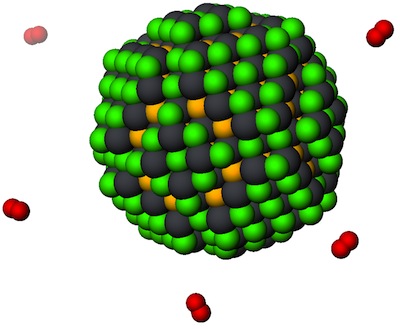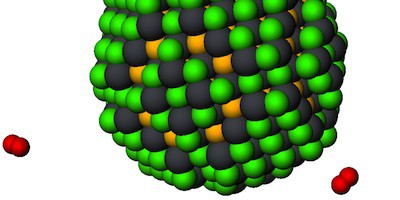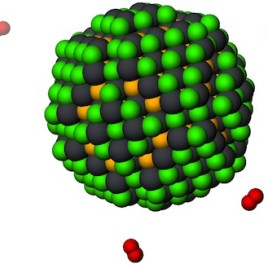
This quantum dot is a semiconducting nanoparticle made of lead (grey) and sulphur (yellow) and is normally vulnerable to attack by oxygen (red) which alters its properties. A new study demonstrates a way to add a protective layer of halide ions (chlorine, fluroine, etc., green) that resists attack by oxygen and allows for a new type of more efficient quantum dot solar cell. (Image credit: Zhijun Ning and Oleksandr Voznyy)
Researchers have created a new breed of nanoparticle that could lead to cheaper and more efficient solar cells.
Quantum dot solar cells are built using semiconducting nanoparticles that could be mixed into ink and printed in ordinary printers, greatly reducing the cost. Like traditional solar cells, they rely on two types of semiconductor materials: one that is ‘electron-rich’ (n-type) and one that is ‘electron-poor’ (p-type.)
While making quantum dot nanoparticles that act as p-type semiconductors has been relatively easy, until now the n-type ones have tended to be unstable in air, reacting with oxygen to turn into p-types.
The paper outlines a new surface engineering strategy that allows the nanoparticles to resist air oxidation, and describes a new type of quantum dot solar cell, the ‘inverted quantum junction.’
Original research paper published in the journal Nature Materials on June 8, 2014.
Names and affiliations of selected authors



